
Thinking of Training in Medical Aesthetics?
A Guide for Medical Professionals
“I DON’T KNOW ANYTHING ABOUT MEDICAL AESTHETICS”
It’s an obvious place to start. You don’t know anything about being an aesthetics practitioner. What’s it all about?
Well, actually you’re probably already most of the way there. Going to have Botox or fillers isn’t like going to have a regular beauty treatment, there’s an element of fear to overcome, both of the treatment and of the results. Our clients need to know that they’re in the hands of a qualified medical professional. You already have many of the skills you need. Our students are often surprised by how comfortable they feel with their training from the offset. The transformation from nurse to aesthetics practitioner is quite a natural one.
We’re viewed, by many of our clients, as occupying a layer of expertise somewhere between beauty therapy and surgery but leaning more towards the medical. All you have to do to be a great aesthetics practitioner is to add some extra skills and be the medical professional you already are.
The treatments
There are six, profoundly effective, core treatments with which you can fill your diary. With these six treatments you’ll be able to treat just about any issue that comes through your door. None of these treatments require any expensive equipment.
It’s also important to know that you can continue to expand your skills within these treatments. You’ll be able to continue to learn and develop within these fields not only because they’re so versatile but also because they too are continually developing.
Botox
Botox injections cause relaxation of the muscles. They can be used to eradicate or reduce active lines and can have an effect on static lines too. They can also be used as a lift by relaxing muscles that hold certain areas of the face down.
Not only is Botox useful in treating existing lines but it’s becoming increasingly popular as a preventative. More and more people are starting to understand that Botox works even better as a preventative than as a cure. Because of this Botox is becoming popular across all age groups.
New Botox clients can be a little scared of the needle and are often very relieved by how tiny it is. There’s very little discomfort, if any, involved with properly administered Botox injections.
Dermal fillers
Dermal fillers are injections of hyaluronic acid (HA) gel. HA is a naturally-occurring constituent of the skin. Where Botox shapes the face by controlling the muscles dermal fillers do so by adjusting the shape of the surface of the face.
The most popular treatments using dermal fillers are to the naso-labial lines, (the furrow from the nose to the corners of the mouth) and marionettes (the lines from the corners of the mouth to the chin). Treating one or both of these areas can have an immediate and profound effect, we often have clients squealing with delight when they look in the mirror.
Dermal filler injections can be a little uncomfortable if not administered properly so it’s important to learn the right techniques. A reputation for care and gentleness will help your practice greatly.
Lip augmentation
This is, technically, another dermal filler treatment but it’s considered to be a separate discipline. Your clients will come to you with a wide range of expectations. It’s up to you whether you treat the (usually younger) clients who want the obviously-filled look. We tend to steer away from that but there are plenty of practitioners (with plenty of happy clients) who thrive on it. It’s the same treatment but just using more filler.
Here, even more than with fillers to the rest of the face, it’s important that the client’s discomfort is kept to a minimum. Allison teaches a great technique using a cannula. We get some lovely comments from clients about how comfortable her technique is.
Chemical peels
Peels are such a lovely thing to be able to do, you can literally transform the quality of your client’s complexion. While it’s true that peels are carried out in the general beauty industry we can use stronger, deeper peels and achieve much more profound results. In terms of strength of peel we start where beauty therapists have to stop.
We offer three levels of peel, AHA, Retinol and TCA.
For maintaining general skin quality the AHA peel is fine, there’s no downtime and your client can see you as regularly as once a month (we have many clients who do this).
A standard retinol peel is somewhere between AHA and TCA, there may be some downtime and the peeling may be visible.
A TCA peel is a much more profound treatment and may involve some downtime as the peeling is visible.
One of the happiest, and most life-changing, things you can do with peels is to help young people with acne. At a time when a young person’s confidence is being formed acne can be socially debilitating and these psychological effects can last a lifetime. With peels we can have an amazing effect on this kind of skin, literally changing lives. It’s such a lovely thing to be able to do.
Microneedling
Microneedling is gaining popularity helped by shining endorsements from the likes of Brad Pitt, Jennifer Aniston, Kim Kardashian, Demi Moore, Gwyneth Paltrow and a host of other celebrities.
In the Microneedling process tiny needles pass through the epidermis pricking the dermis. The dermis reacts as if wounded and a cascade of reactions take place. One of these effects is the production of new collagen, the holy grail of youthful skin.
Because it reboots the skin by triggering the repair process microneedling can also be used to treat stretch marks and scars (including acne scarring) and countless other skin issues.
Up until relatively recently the best way to deliver the needles through the skin has been by roller but this method has two significant drawbacks:
Firstly, the needle length can’t be changed mid-treatment to suit the different areas of the face.
Secondly, as the roller passes over the face, the needles enter and leave the skin in a different plane causing an internal gouging effect. This causes much more damage and discomfort than is necessary.
Fortunately there is now a far better method. A powered Microneedling pen punctures and leaves the skin vertically and in the same plane having a minimal effect on the epidermis. It also has adjustable needle length meaning all areas can be treated at exactly the right depth. The pen is vastly superior to the roller.
Fat Dissolving Injections
Not to be confused with ineffective fad systemic treatments like the “Skinny Jab”, Fat Dissolving Injections (FDIs) actually target and destroy the fat cells permanently by breaking down the cell walls. The fat and cell debris are then cleared away by the lymphatic system.
These injections produce the best results in small, localised areas like the under-chin fat pad.
This treatments are relatively new and their effectiveness is continuing to improve as new-generation brands enter the market.
“IT FEELS LIKE A BIG STEP”
This is something we hear quite a lot when talking to people who are considering taking up medical aesthetics. You can’t quite put your finger on it but it feels like a big step away from the security and familiarity of your current job and into an unknown world.
Actually you can decide how big a step it is. You can start with a very small step if you like. In most cases you don’t have to move away from the NHS at all if you don’t want to. You can keep your full-time job and run your aesthetics practice in your spare time. It’s quite possible to make a very good second income this way.
Some practitioners play it by ear and cut a day at a time from the NHS as their practice grows. On the other hand some new practitioners go straight into working full time in their practices and never look back.
However you do things it will be entirely your choice and you’ll be in complete control.
As far as it being an unknown world goes, you’ll find that it becomes a familiar one very quickly. You can create your practice exactly as you want it to be. No one will be telling you what to do or when you can do it. You can work at your own pace and run your business, full or part time, in a way that compliments your life.
You don’t have to give this business much time at all but, once you get started, you’ll probably find you want to.
“I DON’T KNOW ANYTHING ABOUT RUNNING A BUSINESS”
I regularly talk to our students about the general running of their businesses. They’re usually surprised by how uncomplicated this one is and often say they’d been worrying about this bit for nothing.
Overheads are low, there’s no payroll and very few outgoings so, as long as you have clients coming to you for treatments, you can be reasonably confident that you’ll be making a decent profit. Just keep a record of what comes in and what goes out, keep your receipts and bank statements and hand everything over to your accountant for them to sort out.
Your accountant will ask you about your other incomes and work everything out for you so you don’t pay any more tax than you need to.
Running a business can seem like uncharted territory before you get started but, once you’re up and running, you’ll find you can shape it to suit your life and it’s a lot simpler than it seemed at first.
“IS THIS FOR ME?”
It’s only natural that you would ask yourself, “Is this for me?” It’s a good question and one that should always be asked when considering a career move. Is this your kind of thing? Will it suit your lifestyle? Will you be happy?
The most important thing to remember here is that your practice will be whatever you want it to be. You can create your practice to suit your life. Rather than being forced to fit an established set of conditions you’ll be able to shape your practice, where you work, how you work, what times you work and who your clients are exactly to suit yourself.
We had no one guiding us when Allison first started practicing. We looked at other practices, thought about it and made a conscious decision to start from scratch and do it all our own way and we’re so glad we did.
When it comes to how you run your practice you have a completely blank canvas. This is your chance to shape your days the way you want them to be and be happy in your work.
“WILL THERE BE ENOUGH WORK FOR ME?”
In his talk “The Single Biggest Reason Why Start-ups Succeed” start-up expert Bill Gross sites timing as the most important factor when starting a new business. That’s why we think it’s important that anyone considering entering the field of medical aesthetics at this time knows that their timing couldn’t be better.
Only 4% of women who have considered having a treatment such as Botox or fillers have actually had one. Despite that practitioners all over the country are making very nice livings already. As the numbers for cosmetic surgery fall year-on-year our field is growing rapidly and is set to explode.
I think we’ve only seen the tip of the iceberg. I fully expect that it will become unusual not to be having at least one of our treatments.
An obvious consideration when choosing whether to start a business is how much competition there will be. This is a major concern when you’re looking at a scalable business (meaning one that can be scaled-up, sometimes limitlessly, to meet demand). But the great thing about our business is that we can all only fill our diaries once so someone else stealing all of the market isn’t a concern. And, believe me, if you fill your diary, you’ll be more than happy with your income.
So, add the fact that the market is set to explode to the fact that each practitioner is limited by the number of hours in the week and it’s clear that we’re going to need more and more practitioners to meet the extra demand.
“HOW WILL I GET MY CLIENTS?”
It would be a pretty reckless person who thought of starting a business without first considering how they were going to find their customers. Happily we can answer this question in two words. Social media. It just works.
Our clients are definitely out there, they’re interested, they’re on social media and they’re growing in number.
In our Practice Management Course we show our students the method we use on social media that it took about 18 months of trial and error to perfect. It’s quick, simple and highly effective. Using this method we can turn the influx of new clients up or down depending on our needs.
Botox, fillers etc are a hot topic of conversation so, before long, you should start to notice clients coming to you by recommendation. It’s very satisfying when clients respond to your ads but nothing beats the feeling you get when they tell you their friends recommended you.
“WILL I HAVE THE CONFIDENCE?”
It’s all down to your training and it’s important to get it right first time.
We often get students who come to us having trained elsewhere but who didn’t have the confidence to begin practicing. This is such a shame, poor quality training is such a waste of money.
With the right training, the right trainer and the right support there’s no reason why you shouldn’t take your new skills forward feeling full of confidence. This should be of the utmost importance to your trainer.
We have a section on choosing the right training below.
“HOW WILL I TRANSITION FROM MY CURRENT JOB TO MY PRACTICE?”
The transition period from full-time employment to running a new business can be tricky. It’s unlikely the new business is going to provide a proper income from day one so, more often than not, you have to find the time to build the business while still working full-time.
Happily this is, most likely, not the case when transitioning from full-time NHS work to Aesthetics Practitioner. An NHS employee is likely to be able to cut their hours gradually as their aesthetics practice grows providing the safest possible transition from one to the other.
Another potential pitfall with other types of business is the ongoing overhead costs they have whether they’re making money or not. Luckily, in our case, the overheads are so low that they can usually be covered with one treatment per week allowing time for the business to grow safely.
In terms of transition from employment to self-employment, NHS to aesthetics practitioner has to be one of the safest and easiest there is.
“WHERE WILL I WORK FROM?”
Everyone has different ideas, the main ones are:
- Mobile
- A room at home
- Satellite clinics in beauty salons
- A dedicated room within a beauty salon
- Dedicated premises
We recommending finding a room to let within an existing beauty therapy practice.
A really good way to find your room is to make a list of the places you’d like to work from and get some business cards printed. Go into the salons and ask them if they have a room to rent, tell them you’re a medical aesthetics practitioner specialising in Botox, fillers etc and give them a card. At this point everyone’s ears prick up for two reasons, firstly because they want you on the premises doing their personal treatments for them and secondly because of the prestige factor. People in the general beauty industry are well aware of their limitations regarding what treatments they’re allowed to perform. Having a resident nurse practitioner is quite prestigious for a beauty therapist.
It’s possible that there won’t be a room immediately available but there’s quite a high turnover of single-person operations in the beauty industry so, chances are, something will turn up before long.
Having your own dedicated room is a great way to get started as an aesthetics practitioner. Your clients will view you as an established practitioner from day one and this will move your practice along nicely.
“WHAT ABOUT PRESCRIPTIONS?”
A prescription is only necessary for Botox, saline and some numbing creams. You can get your supplies for all your other treatments just by signing up with a supplier and placing your order.
If you’re not already a prescriber you can ask someone else to prescribe for you. Allison prescribes for several other practitioners close to our clinics. It’s ok just to Google other practitioners, call them and ask them if they prescribe for third parties. You’re not asking them to do you a favour, they charge around £30 for a 15 minute consultation and prescription so it’s good business for them.
You might also consider becoming a prescriber. You can self-fund a V300 course at a university. This usually takes 3 or 4 months part time and costs around £1,500. That may seem a bit steep until you consider that it’s only the same cost as one prescription per week for a year.
The NMC like you to have been working in your specific field for 12 months before you take the prescribing course.
If you become a prescriber you can then prescribe for other practitioners if you like. Those £30s soon add up. 3 a week would take less than an hour and bring in £4,500 a year!
“WILL I BE QUALIFIED AFTER TRAINING?”
Unless there are some courses out there we don’t know about that don’t qualify you to treat clients then the answer is yes, you’ll be qualified to start treating clients.
Currently, in the absence of a robust legal framework, the ultimate arbiters of who can do what to whom are the insurance companies so it’s best to check that the courses you take are approved by at least one of the major insurers (Insynch, Hamilton Fraser and Cosmetic Insure.) If they are that means the insurer considers you qualified to treat your clients.
It’s important, once again, to point out that you already have much of the knowledge and skills you need. This is a natural progression for a medical professional.
“WHICH TREATMENTS SHOULD I TRAIN IN?”
When you start practicing in your area you’re going to get one chance at making a good first impression. When a client presents to you it’s often with an issue rather than a request for specific treatment. So, if you can’t treat your client’s issue, it’s likely they’ll go away and not consider you again.
We strongly recommend that you train in the big six treatments and present yourself to your potential clients, from day one, as a fully-rounded aesthetics practitioner.
- Botox
- Dermal fillers
- Lip Augmentation
- Chemical peels
- Microneedling
- Dermaplaning
You’ll make more appointments and it takes very few treatments to recover cost of training in each discipline.
I think most people understand that it’s best to start with all six treatments as we get very few requests for training in individual ones. Almost everyone opts for our Seven Course Package (which includes Practice Management too).
“WHAT’S THE PROCESS FOR GETTING STARTED?”
The process for getting started is:
- Do your training.
- Establish where you’ll be working from.
- Get Insured.
- Start doing treatments.
If you’re not a prescriber you’ll need to arrange one for Botox.
Your insurers should want some proof of your training and they’ll need to know where you plan to work from.
We encourage our students to go straight home, get insured and do some treatments on family and friends, even if it’s just at cost. This is a great way to affirm your skills and confidence and set yourself up for success.
“HOW DO I CHOOSE THE RIGHT TRAINING?”
The nature of your training will have a big effect on the quality of your practice. There is some very good training out there but there is also some bad.
Training isn’t just a matter of getting a certificate. The quality of your training will determine your levels of skill and confidence going forward which will, ultimately, affect the level of your success.
Obviously we’d love you to train with us but, wherever you choose to train, there are some important things to take into consideration:
Your trainer
Probably the most important factor is your trainer. Choose a person, not a place.
Your trainer needs to be a good mentor, approachable and conscientious. A good trainer will add that personal touch and make you feel comfortable and able to interact.
Obviously your trainer will need to have good knowledge of the everyday life of a thriving clinic. While training you’re going to have lots of questions pertaining to your own practice. If your trainer is just a trainer they’re going to be less familiar with the details of everyday practice.
Make sure your trainer is a successful, working aesthetics practitioner who is dealing with clients on a daily basis and check their reviews, not just as a trainer but also as a practitioner.
Group sizes
We regularly get students who have trained elsewhere for re-training because they don’t feel prepared to practice. One of the most common complaints is group size. This is going to have a big effect on the quality of your training.
We believe training groups should be kept to a maximum of three. We’ve tried different group sizes and three just works. In a small group like this you can quickly get to know your fellow students and feel confident to ask questions and interact.
A small group is also highly beneficial during the practicals. You shouldn’t be trying to peer over other people’s shoulders during the demo and you should be able to see and hear the trainer’s guidance properly during the other students’ live treatments. Two people (including your trainer) either side of the treatment chair is just right.
Students in small groups often become friends and support each other not only during training but afterwards too.
The training venue
We believe training should take place in a real working clinic where everything is at hand and students can really take in how a thriving clinic looks and feels. This way, over the course of the training, the familiarity of the clinic environment helps to boost your confidence.
In a real working environment there are countless little tips you’ll pick up about how to arrange, organise and operate your own clinic.
Is the course CPD certified?
CPD certification does three things:
- It proves to you that the course has been properly structured and that the whole package has met stringent CPD standards.
- It proves to your clients that you’ve been properly trained.
- It proves to the insurers that you’ve been properly trained.
Is the course approved by the major insurers?
Insurer-approval of a course means that the insurers will accept you on the basis of your training. The three main insurers in our field are Insynch, Hamilton Fraser and Cosmetic Insure, check that the course(s) have been submitted to, and approved by, at least one of these.
Ongoing support
We’ve heard of so many cases where people have had no support at all following training. You need to know there’s someone there to support you through those first few months, not only when it comes to treatments but also the running of your practice. Check what ongoing support is available to you.
The logistics
If you’re going to do your courses individually you need to look at the practicalities and cost of travelling to and form the training venue several times. Also, if accommodation is an issue, check costs, quality and proximity to the training venue. These are all things that need to be factored in when making your decision.
Models
If you have to supply your own model(s) you’ll need a reliable person (or people) to go with you. This all increases costs and the risk of something going wrong. It’s far better if the training organisation supplies your models.
Business advice
A nurse can’t be expected to immediately know how to run a business. How much advice and guidance will you get regarding your practice and your business?
One by one or all at once?
This is one of the bigger issues when choosing your training. Do you take your training courses all at once or one at a time?
It’s logical to think that you could take your Botox training, do a few treatments, save your profits, do your dermal filler training and so on but that’s not usually how it works out. People who qualify in just one treatment are often disappointed by the amount of work they get and end up not moving onto the next stage. It’s a shame this happens because it’s not their fault. They could be great at that one treatment but it’s the fact that they only have the one to offer that holds them back.
Clients come to us with issues, not necessarily for a specific treatment, and it often happens that they go away having had a different treatment (or treatments) to the one they thought they needed. They want you to be a rounded practitioner with a full range of treatments to offer them and only having one will seriously affect their impression of you.
In your local area you’ll only get one chance to make a good first impression. Clients who go elsewhere because you don’t have a full portfolio of treatments are unlikely to give you a second chance.
It also makes financial sense to have a range of treatments of offer from day one. It could take you years longer to build up a practice on the train/work/save/repeat cycle than it would by hitting the ground running. And, if you get credit terms with your training, it will be far easier to pay for it doing five treatments than just one.
All-in-all it’s far better to start with a full portfolio of treatments.
Payment terms
What payment terms are you being offered? Can you spread the cost? Are the payments interest free?
It certainly helps to be able to spread the cost of your training. It can mean the difference between being able to hit the ground running as a fully-rounded practitioner and having to start with just one treatment. It’s far better to have the opportunity to pay for your training later, whilst selling a full range of treatments.
***
Choose your training wisely, it will have a big effect on your level of success.
***
Roberts McCarron Cosmetic Training
This guide wouldn’t be complete and, I wouldn’t be doing my job properly, if we didn’t include a section on our own training.
We’ve put a training package together that we believe covers all the bases. We want to deliver the best training, the best overall experience and the best post-training support possible. And we want to make all of this as affordable as possible too.
Don.
Our wonderful trainer, Allison.
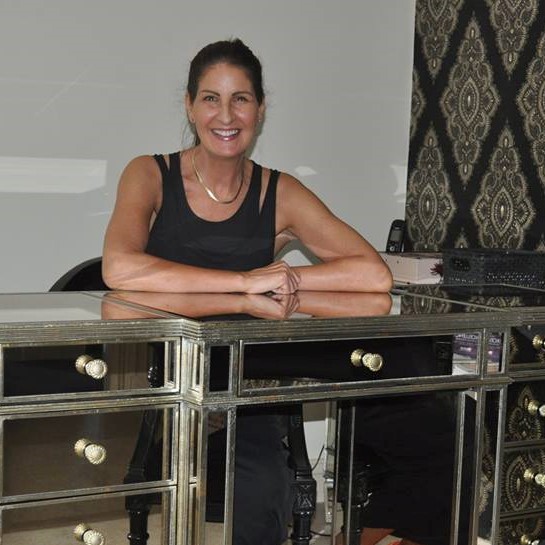
In our Practice Management course I talk about how a practitioner should be their own USP (Unique Selling Point). Your competitors may offer everything you offer but they haven’t got you. I often mention to our students how other training providers are starting to copy us but that we have one thing they can never copy – Allison.
You only have to read the reviews by those who have spent the weekend with her to know what a wonderful trainer she is. From the moment our students arrive on Friday morning they’re instantly put at ease by Allison’s lovely nature. And, by the end of the weekend, they’re often telling us they don’t want to go home.
The reviews by our clients tell a similar story. When you’re trained by someone who is loved by their clients you can learn ways that will make your clients love you too.
Allison delivers the highest-quality training with genuine warmth and her own personal touch. She is, quite simply, a brilliant trainer and a wonderful person.
Our courses

We cover every aspect of each treatment, from consultation to aftercare, in a clear, concise and easy-to-understand way. Courses come with goody-bags and handbook versions of the presentation.
Allison keeps everything interesting and the conversation flowing and our students feel free to interject with questions whenever they need to.
Botox
At foundation level you learn how to treat the upper face, the frown lines, forehead lines and crow’s feet. These well-known “three areas” are, by far, the most popular for treatment.
Dermal fillers
Here you’ll learn the methods for treating naso-labial (nose to mouth) lines or folds and marionettes (mouth to chin). Very popular treatments with instant results.
Lip Augmentation
Allison teaches how to plump and shape the client’s lips according to the client’s wishes. We get a lot of compliments about the gentleness of Allison’s techniques but none so much as with lip fillers. Allison has a special technique that leaves our clients saying they can’t believe how pain-free the treatment was. I hear this so many times when taking calls from first-time clients whose friends have recommended us.
Chemical peels
We use the NeoStrata Pro System which gives you full control over the strength of peel used and the duration of exposure. In your goody-bag you’ll get a full-size NeoStrata peel and after-care kit including:
- Rejuvenating Peel 20%
- Pre-peel Cleanser
- Foaming Peel Neutraliser
Peels are a wonderful thing to have in your toolbox, especially for young people with acne problems.
Microneedling

You can address a whole range of issues including acne scarring, other scars, hypopigmentation, hyperpigmentation, fine lines and general skin tone. Microneedling is also one of the few treatments that actually induces new collagen growth.
In your goody-bag you’ll get a cordless Microneedling pen and 10 heads, enough to carry out 10 treatments.
Fat Dissolving Injections
The final tool in your treatment kit. We train using Desoface and Desobody. Deso contains Lidocaine and is the latest and most-effective FDI available.
Medical Aesthetics Practice Management
New practitioners are being turned out all over the country with no guidance whatsoever on what to do next. It’s so wrong to expect a medical professional who has, to date, dedicated their career to caring for others within a larger organisation to suddenly know how to run a business.
Our online Practice Management course gives you insight into the field of Medical Aesthetics and covers all aspects of running a successful practice including:
You: The version of you that works best for your clients and your practice.
Your practice: The practicalities and day to day running including all the contacts you’ll need from pharmacies to sharps collection.
Your business: Full of things you’ll need to know about how to run a successful business.
Marketing: On top of our existing clients we get between 30 and 60 new clients a month. We’ll tell you how we do it including the 3 changes we made that caused significant surges in the number of new clients we attract. It took us a while to work out the best way to market an aesthetics practice. With this part of our course we aim to cut at least 12 months trial and error from your learning process.
Starting up: How to plan for starting up and everything you need to know to get going.
Progress: You’re all set up, the clients are coming in, what now? We help you plan your progress.
The online course includes lots of useful links to things like suppliers, insurers etc and a downloads section with editable forms including:
- Information, aftercare and consent
- Medical history
- Treatment record
CPD certification
All of our treatment courses are recognised and certified by The CPD Accreditation Service. This tells you, your clients and your insurers that your training has passed CPDAS’s rigorous quality requirements.
Our group sizes
We keep our training groups to a maximum of three. We’ve tried other group sizes and three just works. This gives the right amount of practice with the models and students are much happier to interact during the theory.
With our small groups Allison is able to steer away from the classroom type of course delivery and create a small, intimate group in a working clinic environment. We get so many positive comments about this.
Train in a real working clinic

Our training takes place at our lovely, air-conditioned training clinic in Barnsley, South Yorkshire. This is a busy, successful clinic where Allison treats clients on a daily basis. The clinic provides a comfortable, intimate training environment where our students can settle in and really get the feel of a thriving aesthetics practice.
We don’t have separate clinic and training websites because the two are equally important and it’s important to us that people who are considering training with us should see that we are as much a clinic as we are a training organisation.
Free hotel accommodation with pool, gym and spa



Our students come to us from all over the UK. We provide free accommodation with full English breakfast at the excellent Holiday Inn in Barnsley. Hotel guests are free to use the on-site Bannatyne Health Club, which has a spa, a sauna and an indoor pool.
After your day’s training you can relax at the bar or sit down to local specialities at Brooklands Restaurant. There is a 24-hour room service menu and the up-to-date rooms offer pillow menus and Smart TVs.
The hotel is a 7 minute taxi ride from our training clinic which we provide, free of charge, as part of our service.
Insurer approval

Our ongoing support
This is a very important aspect of moving into the field of medical aesthetics. We often get students for retraining who tell us they were given no support at all once their training was completed. This can lead to a feeling of isolation which can seriously affect confidence and, ultimately, the success of your practice.
All of our students have Allison’s personal number so that they can contact her at any time for advice and support regarding treatments and products.
Likewise, everyone has my personal number for support regarding the running of their practice and their business.
To be honest (and I think this is a testament to the quality of our training) we don’t get many calls. Most interaction seems to be on our busy private Facebook group where practitioners who have trained with us exchange opinions, tips and experiences and generally support each other. It’s heart-warming to see our earlier students, who are now experienced and successful practitioners, supporting those who have just qualified.
The Facebook group also has extra learning modules which deal, in more detail, with subjects covered in your course.
Our Seven Course Package

Our students often tell us what it was that made them decide on us for their training and the fact that we’ve brought our courses together into a single long weekend package always comes up.
Our students travel to us once, get it all done in one go and return home with a full portfolio of treatments at their disposal.
Chatting about the previous day’s training with two other students over breakfast and dinner helps you to stay in the learning zone and get the most out of your training away from the distractions and duties of everyday life.
Models
It sounds like it should be easy. A free or discounted treatment, who wouldn’t jump at that? Well, most people do but getting models to actually turn up on the day is another thing altogether.
Our models are handled by our Practice Manager, Jo. Many have been to us before and are chosen because, on previous visits, they’ve been relaxed and calm and have helped our students with constructive feedback.
Our payment plan
We understand that some people would rather do one course at once so that they can spread the costs but your earning potential, and the first impressions you make in your catchment area, could be severely affected by not having a full portfolio of treatments from day one.
We’ve made it easy for you to start with a full range of treatments and spread the cost with our simple, interest-free payment plan.
Our Seven Course Package costs £2,950 which represents a £1,550 saving on the courses taken individually.
| Deposit upon booking | £295.00 |
| 12 interest free payments | £221.25 |
This gives you the opportunity to be earning from all six treatments before paying your courses off.
Our weekend schedule
We always have theory before lunch and practicals with the models in the afternoon. Our courses run from Friday to Monday in the following format:
|
Friday 9:30 – 4:45 Botulinum Toxin A and Chemical Peels
|
|
Saturday 9:30 – 5:45 Dermal Fillers and Lip Augmentation
|
|
Sunday 9:30 – 5:00 Microneedling and Fat Dissolving Injections
|
We have coffee and lunch breaks at convenient times and all dietary requirements are catered for.
The overall experience
We’ve all had training days, weekends and courses and we know what they can be like. We wanted to be different. We wanted the whole experience to be a pleasant and memorable one and we think that’s what we’ve achieved.
Of course our biggest asset is our wonderful Allison but I think our free hotel accommodation, our small groups, our pleasant training environment, our practice management course, our great goody-bags and our post-training support all come together to make our weekend courses an experience to remember and the best possible way to get started and go forward with confidence.
***
Thank you for reading this guide. I hope you enjoyed it. If you’d like to book your training with us, if you have any questions or you’d just like a chat please get in touch at the bottom of the page. We love talking about training!

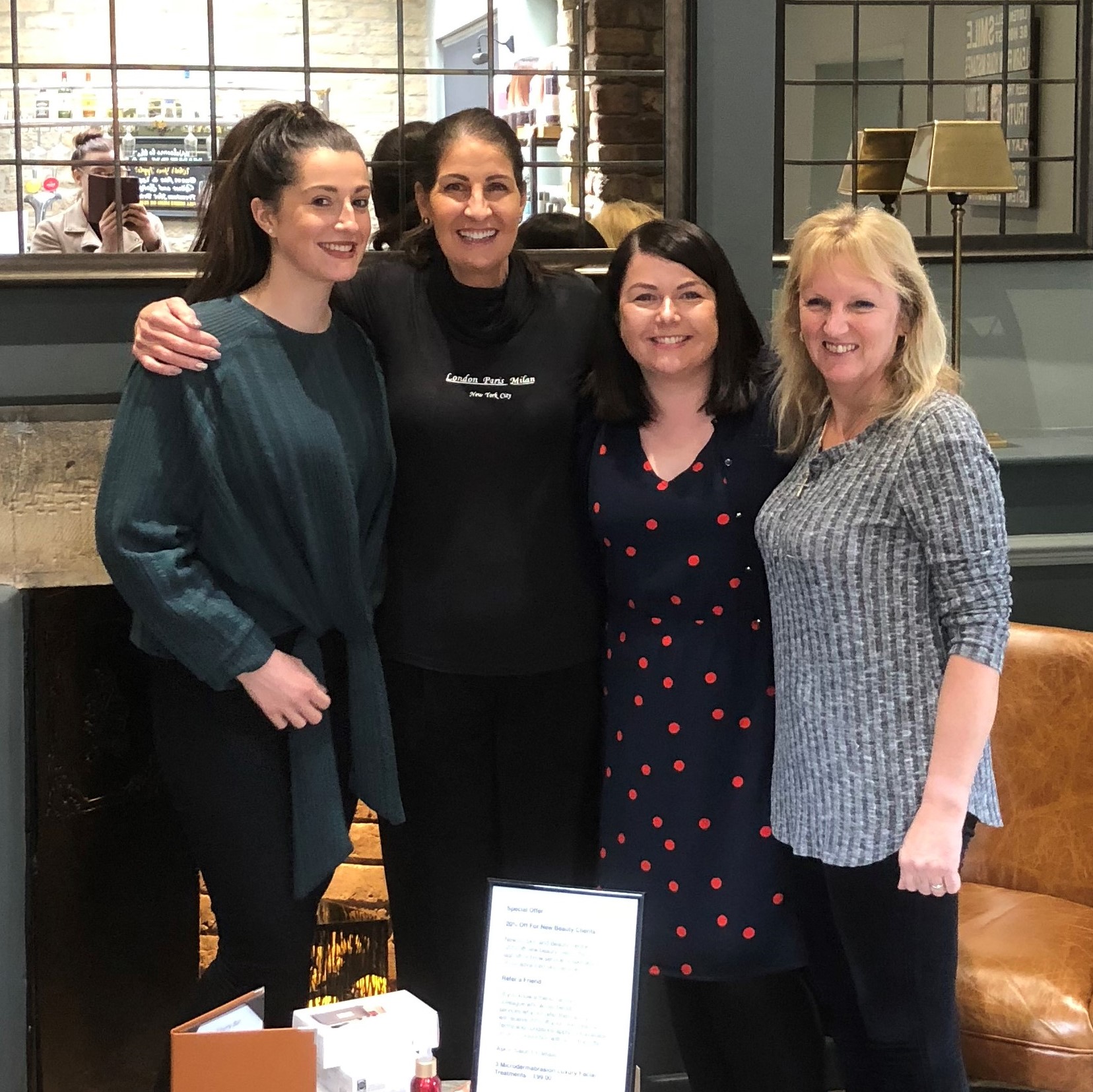
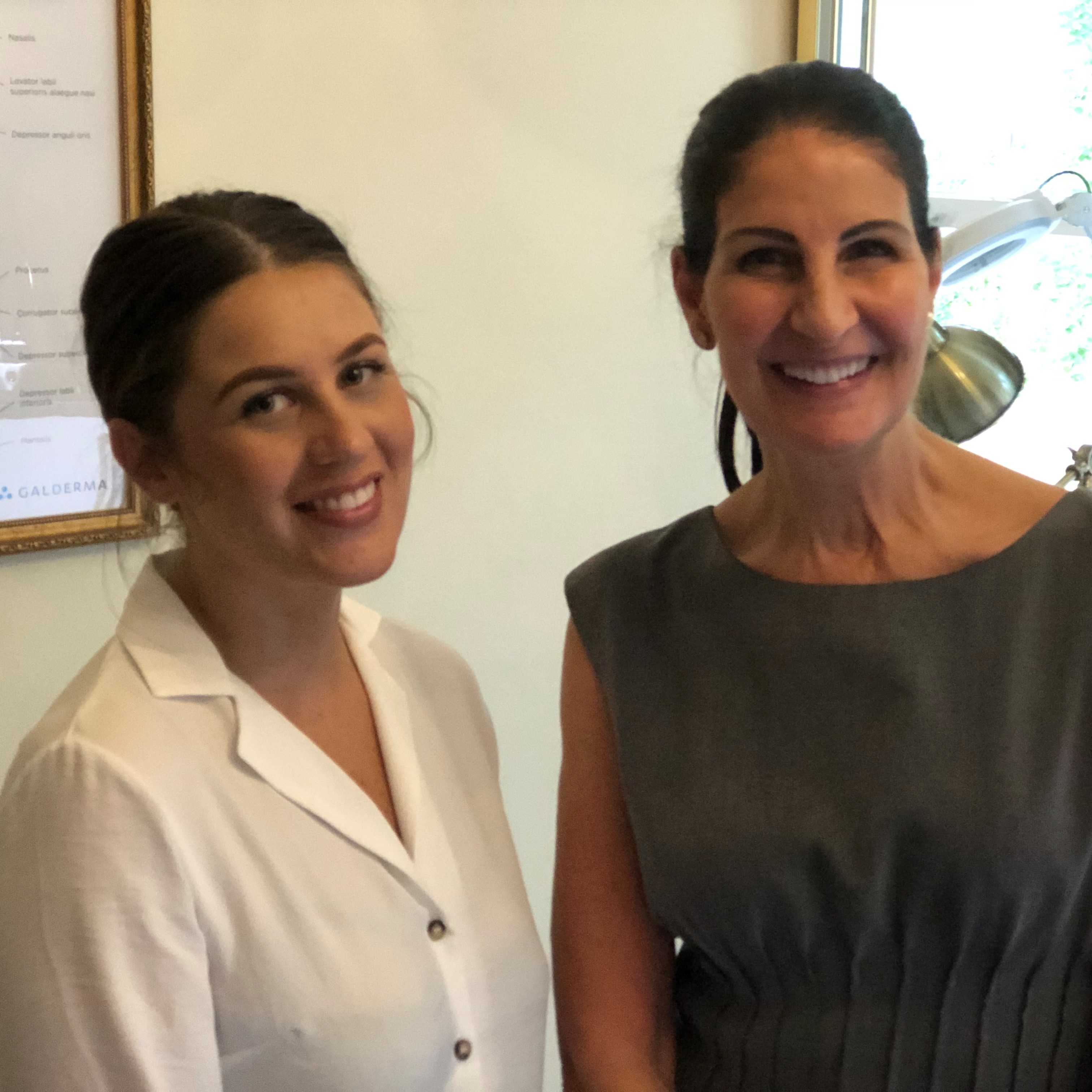

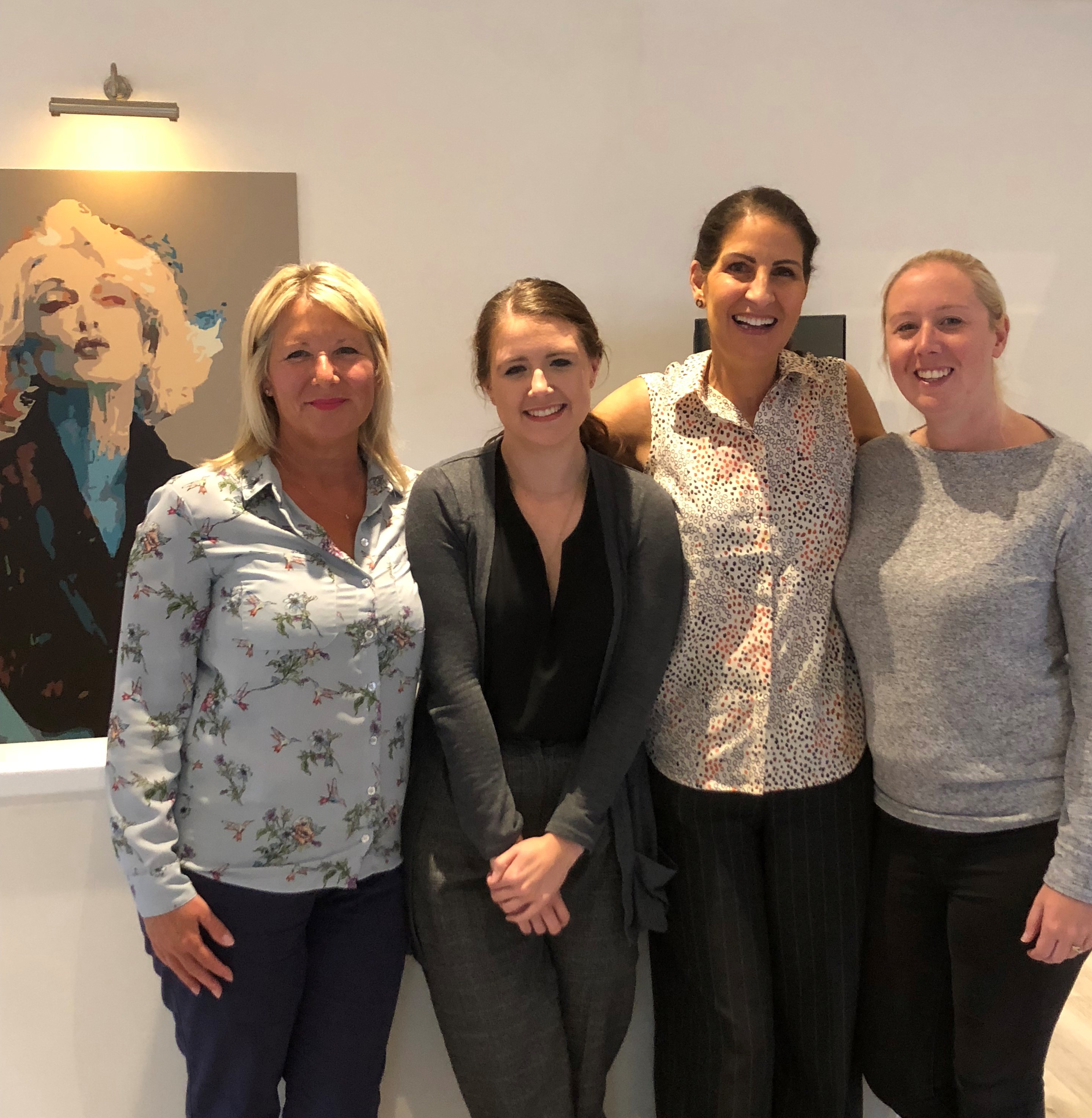


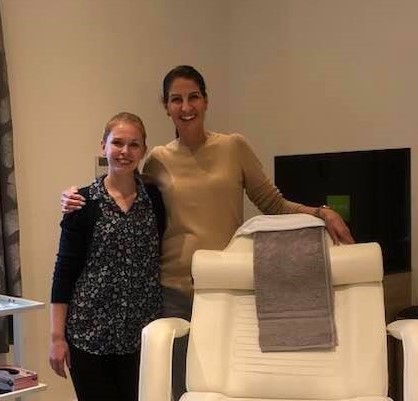

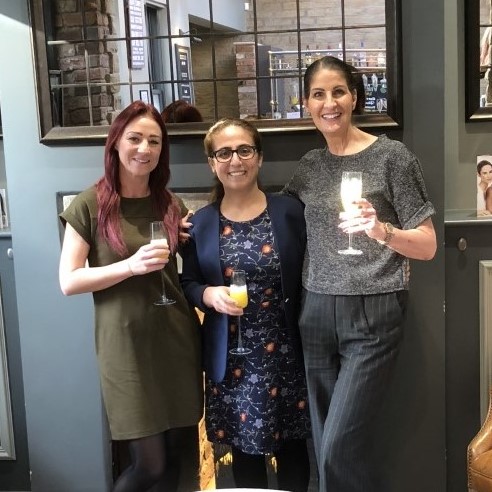

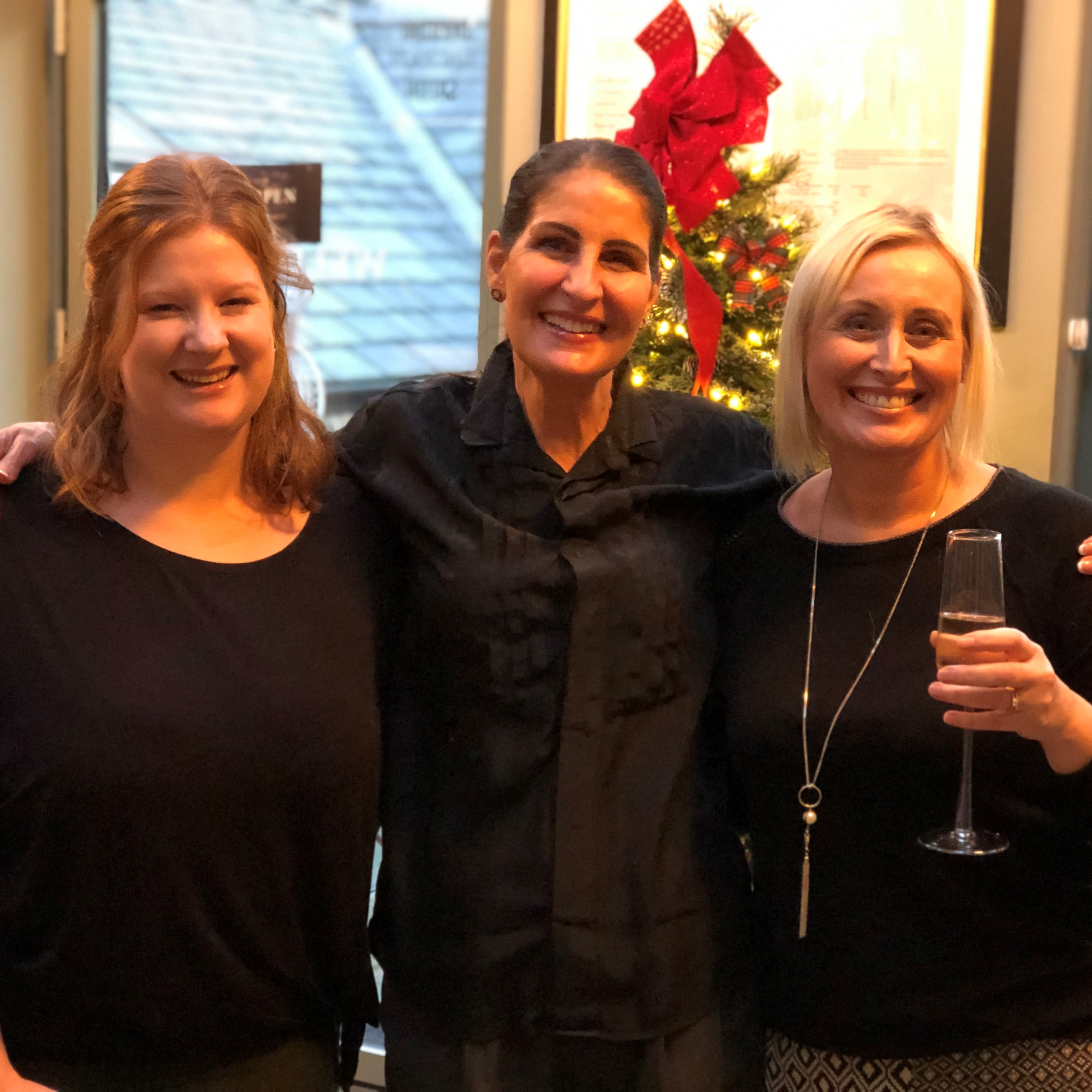


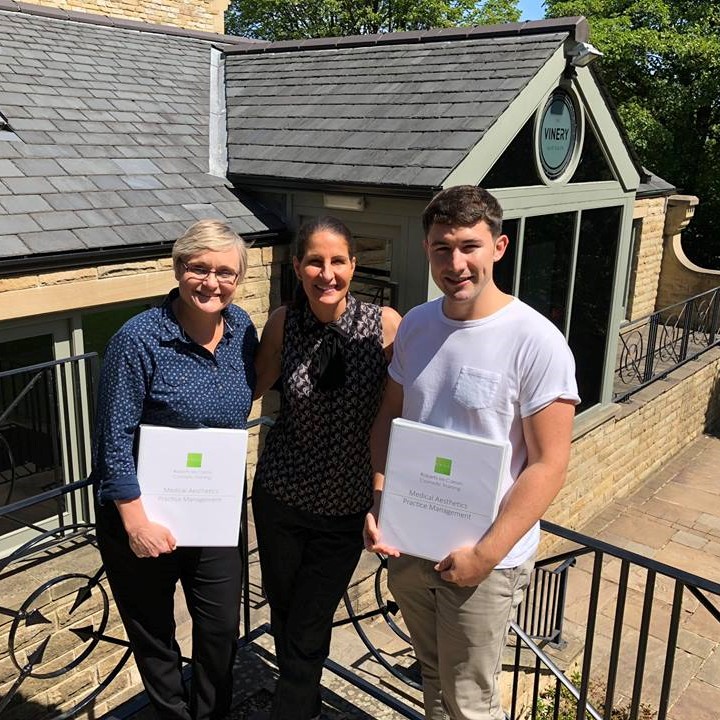

Email us
care@rmclinic.co.uk
Call us
01226 491144
Text us
07568 730344
Roberts McCarron
The Coach House
51 Sackville Street
Barnsley
S70 2BZ